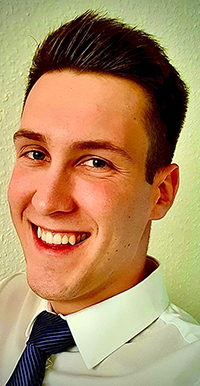Welcome to Seinäjoki University of Applied Sciences
Want to know more about studying in SEAMK and Finland?GET TO KNOW US
We are HEROES
SEAMK is a proud member of the HEROES Alliance – a transnational alliance of nine professional higher education institutions. Together the institutions reach 120,000 students and 14,000 employees from different corners of the EU.
SAID ABOUT US
How to meet Finns
“
I stepped out of my comfort zone of socialisation – and succeeded in it. Here is my advice for other international students.
Nepalese-born Abhinav studies his second degree and manages a hotel in Seinäjoki
“
During my studies, I learned to appreciate SEAMK’s sense of community and open communication between students and staff, which have been instrumental in my current work.
HIGHLIGHTS
Finland's president Stubb visited SEAMK – Showcasing expertise in food and entrepreneurship
President of the Republic Alexander Stubb and spouse Suzanne Innes-Stubb visited Kurikka and Seinäjoki in South Ostrobothnia on Thursday, 23 October 2025. During the visit, they were introduced with Seinäjoki University of Applied Sciences’ expertise in food technology and its food laboratories.
SEAMK has been selected as Finland's ESCI Champion in EWP for 2025–2027
SEAMK has been selected as an ESCI Champion in the implementation of Erasmus Without Paper (EWP) for the 2025–2027 period. European Student Card Initiative Champions are higher education institutions and organisations that have made significant progress in adopting the different building blocks of the European Student Card Initiative (ESCI). Through these efforts, these organisations are supporting the digitalisation and simplification of administrative processes in Erasmus+ mobility.







